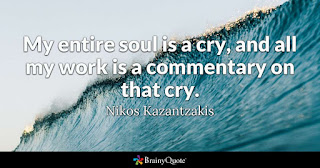Unlike Texas, you don’t have to drive three days to get out of Louisiana. We left the Lake Charles area yesterday morning , driving through Lafayette and on to Baton Rouge where we crossed the mighty Mississippi River. I’ve always wanted to travel the Natchez Trace Parkway, so we turned northward at Baton Rouge eventually arriving in Vicksburg last night.
The Natchez Trace Parkway is a 444-mile road and scenic drive through three states. It roughly follows the “Old Natchez Trace,” a historic “travel corridor used by native Americans, ‘Kaintucks,’ European settlers, slave traders, soldiers and future presidents.” Perhaps the heaviest use of the Trace was from 1785 to 1820 when Kaintuck boatmen floated their flatboats down the Ohio and Mississippi rivers to markets in Natchez and New Orleans. They sold their cargo and boats and began the trek back north on foot to Nashville and points beyond. The Parkway was established in 1938 and is under the management of the National Park Service. It may be the only 444-mile long, two hundred yard wide National Park in the country.
So what’s the big deal about this Natchez Trace? There is little left to see of that original trail. Nature and man have reconfigured (or disfigured) the primeval forests, rivers, bayous and streams that once surrounded the ancient trek (used for more than 10,000 years). Why have I wanted for years to travel this path? I have found it extremely meaningful to be in any historical place where men and women before my time have walked and played and lived. These phantoms, my forefathers and foremothers, blazed a trail that I can now walk or drive and they appear to me (in my imagination) like phantoms lingering still along the Natchez Trace, or Stonehenge in England, or at Delphi in Greece. I can almost feel their presence. Does that sound ridiculous? Perhaps it is. But I have felt such phantom presence in many places. When walking through an American World War II cemetery in Scotland I sensed the presence of those young men who rest there. It happens almost every where: in the Garden of Gethsemane outside Jerusalem, or sailing the Nile in Egypt. And so it was yesterday as I drove a portion of the Natchez Trace Parkway. I felt the phantom presence of the Natchez, Chickasaw, and Choctaw native peoples. I sensed the presence of Andrew Jackson, Meriwether Lewis (who died along the trail in 1809), John James Audubon, Jefferson Davis, and Ulysses S. Grant, along with the hundreds of Kaintucks who also traveled that path.
I am convinced that the cry of those who came before us continues to sound in us. Their cry joins our cry. Isn’t that a silly thought? Nikos Kazantzakis suggested that we “uncork our mind” until we realize “there is no such thing as ‘me,” ‘you,’ and ‘he or she’; everything is a unity and this unity is a profound mystic intoxication in which death loses it scythe and ceases to exist. Separately, we die one by one, but all together we are immortal.”

No comments:
Post a Comment